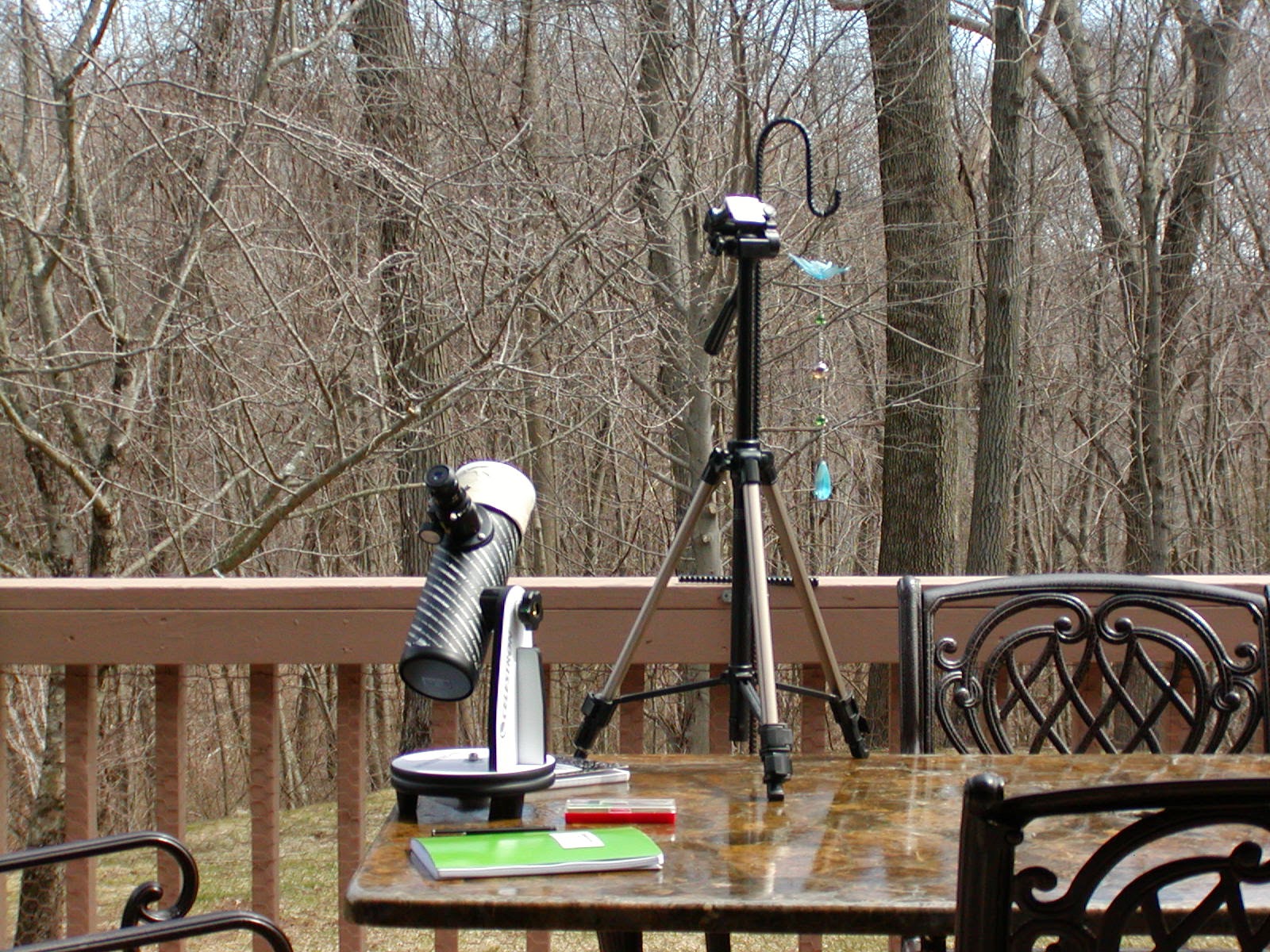As the warmer weather gets underway here in New England, I turn my attention to more things astronomical. For the first time in weeks, I no longer fear being exposed to bitter cold. While there may be plenty to do at night, I have turned my attention to solar astronomy.
As mentioned on my entry for the 1st of this month ("Solar "Reflections""), I decided to play with an alternate method of viewing the Sun, and the initial results showed promise. One thing I failed to mention with regards to these recent attempts is that on the 29th of January of this year, there was an chance alignment that produced a solar image on the wall between the foyer and the half bathroom. It wasn't the sharpest of images, but was clearly the Sun.
I decided to make a "screen" (a cardboard box top) to see what type of image could be gleaned.
It turned out the the source was light coming through the kitchen window and passing between the freezer and refrigerator doors and handles.
It wasn't much of a pinhole, but it was just enough to produce an image. It was just sharp enough for me to make a simple animation of the Sun heading down.
Now on to the current work.
After my initial foray into pinpoint reflection this month I decided to try again, but this time setting going even further. Additionally, I made a dedicated solar filter and Hartmann mask for my Celestron FirstScope, and have been undertaking a series of observations with that as well. But I wanted to see to what limits pinpoint reflection could be taken.
As I had already set up for my daily solar session, I felt that it was also the best time to try for a projection into the house. With the Sun at such a high angle, it was guaranteed to be much brighter, and therefore able to provide that much more contrast. It was almost 13:00 EDT, and the Sun rode high.
I chose to set up, as I had before, on the back porch, taking advantage of the recently unpacked table to mount the pinpoint mirror. As I mentioned in the previous piece, this is a small fragment of a first surface mirror, but what is important to note is the size; not quite 5 mm square. In my first attempts back in the autumn of 2013, I had reduced that area to a point 3 mm in diameter. Since then, the paint has come off. While we may have lost some detail, we gained contrast.
I set up my drawing pad and easel on the dining room table. Total distance between the mirror and the paper was perhaps 9 meters (30 feet). The resulting image was around 125 mm (5 inches), but a measurement wasn't taken. The solar disk showed, but didn't provide enough detail.
For my second attempt, I slowed my camera's shutter speed. This allowed for a little more contrast. Something began to show up. The third attempt was pretty much the same.
It was at this point that I decided that what was really needed was more distance between the mirror and the screen. I chose to go another 2.4 meters (8 feet). This resulted in the easel being set up straddling the kitchen sink. Here, the details started to become a little clearer. Sunspots were beginning to become visible.
After adjusting the the image's contrast and light levels, the sunspots in the Sun's northern hemisphere became very visible. The small group coming around the Sun's western limb was even there, albeit faintly.
 |
| North is to the left in the projected images. |
Compare this to the official Space Weather image for today.
By this time, high altitude clouds began making rolling in, so I put away my gear and waited.
At a few minutes before 16:00 EDT, I decided to go even further afield, this time into the yard beyond the porch.
My "screen" was taped to the wall in the living room. Overall distance was now about 18 meters (60 feet). The projected image was around 200 mm (8 inches). There were still some high altitude clouds, but not as bad. Not surprisingly, some work with the image still needed to be done. While some of the contrast was lost, after the image was worked, the sunspots once again showed very clearly. They were, however, noticeable to the naked eye.
Perhaps what is really needed is a lot of distance and a very dark room into which the image is projected. No doubt larger sunspots would show even better.
Still, I think we can call this little experiment a success. If anything, it was fun.












No comments:
Post a Comment